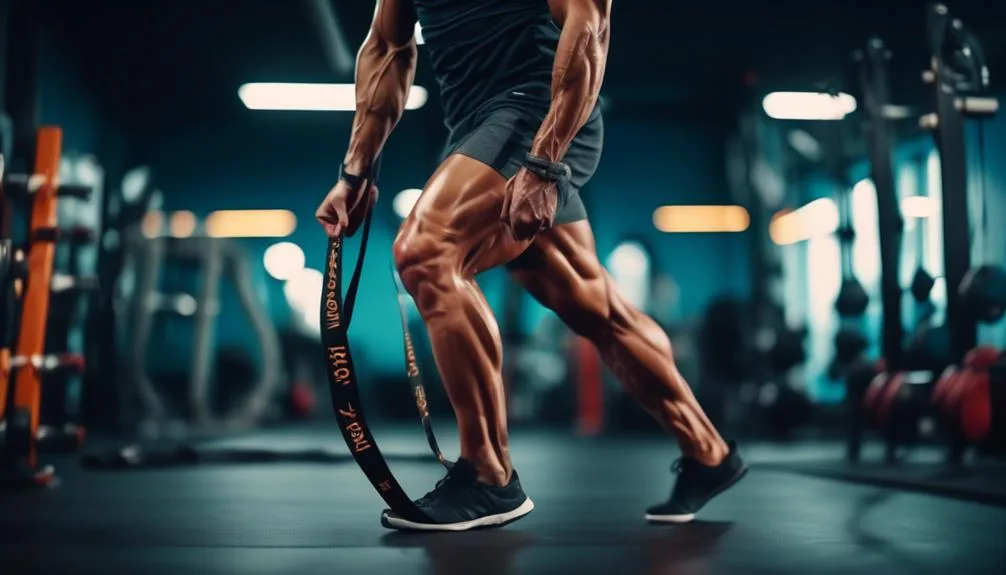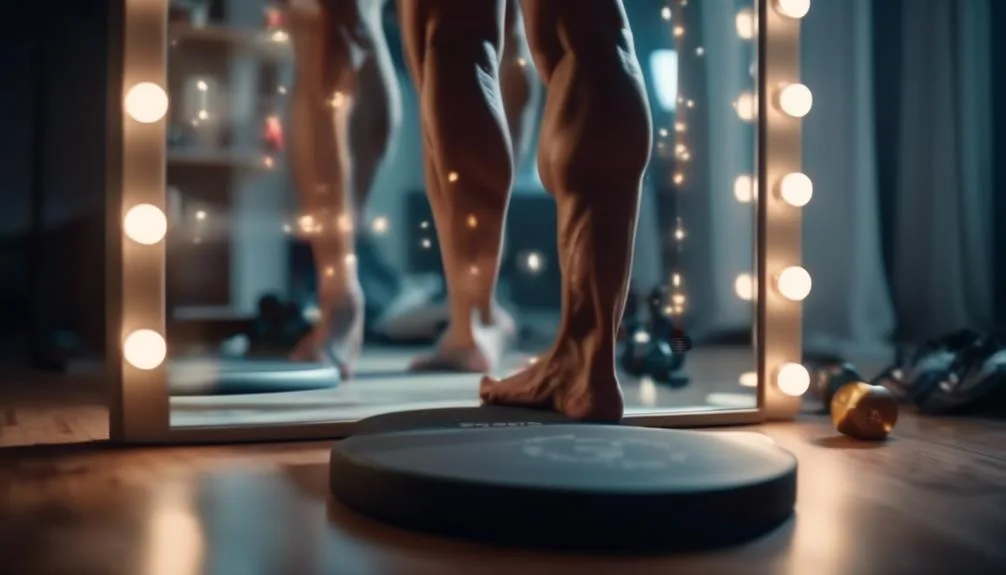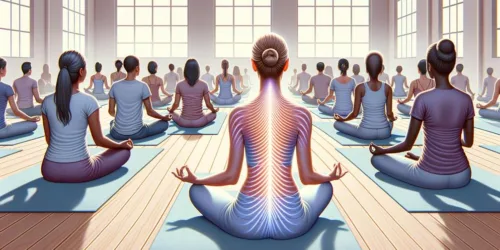Unlock Your Full Potential: Strengthen Your Weak Leg With These Powerful Strategies
Have you ever wondered why your journey to peak physical condition feels like it's missing a crucial piece? If a weak leg is what's holding you back, you're about to embark on a transformative journey.
This guide offers you a well-rounded approach, from pinpointing the problem areas to implementing strengthening strategies that bring about real change. By adjusting your daily routines to ensure equal leg usage and adopting expert-recommended exercises, you'll soon notice a significant improvement not just in your leg strength but in your overall balance and mobility.
And with insights from Dean Pohlman, you're gaining knowledge from a trusted source in the field. So, why wait to tap into your full potential when the key to unlocking it is right at your fingertips?
Stay with us as we explore these powerful strategies to fortify your weak leg and achieve the balance you've been striving for.
Key Takeaways
- Weak leg imbalances can be caused by injury, leg-dominant sports, everyday life activities, and incorrect alignment of the hips, knees, and ankles.
- Strategies to strengthen weak legs include maintaining full height when walking, pressing down harder into the weak leg during full body movements, watching for differences in technique in a mirror, checking for uneven hips, knees, and foot placement, and making adjustments for equal use of both legs in day-to-day tasks.
- Finding your dominant leg involves identifying the leg you plant with, not the one you kick with, as it typically has more strength and stability. Focusing on the weak leg for the first month and shifting body weight to the non-dominant side can help correct imbalances.
- Sustaining balance and addressing imbalances requires reevaluating movements after one month of focusing on the weak leg, finding balance between the dominant and weak side, incorporating slow-moving exercises with limited resistance, paying close attention to form in static movements like lunges and squats, and practicing yoga to slow down, examine movements, and make subtle adjustments for balance.
Identifying Leg Imbalance
Identifying leg imbalance involves closely observing your body's symmetry and strength distribution during movement and rest. You'll start by looking for signs of leg imbalance, which can manifest as uneven wear on your shoes, a tendency to favor one leg, or experiencing discomfort during or after exercise.
It's crucial to pay attention to these cues as they're your body's way of signaling that something's off. Correcting leg alignment isn't just about aesthetics; it's about preventing future injuries and ensuring your body works as a cohesive unit.
Strengthening Techniques

How can you effectively strengthen your weak leg and correct imbalances for better overall function and injury prevention? The key lies in:
- Targeted Exercises:
- Focus on exercises that isolate your weak leg, such as single-leg squats or lunges.
- This ensures that your weaker leg catches up in strength without the dominant leg taking over.
- Correcting Alignment:
- Pay close attention to the alignment of your hips, knees, and ankles during exercises.
- Misalignment can exacerbate imbalances and lead to injury.
- Consistency and Progression:
- Gradually increase the intensity and complexity of exercises.
- Consistency in your routine ensures steady improvement, while progression challenges your leg to adapt and grow stronger.
Dominant Leg Discovery

Discovering your dominant leg plays a crucial role in understanding and correcting imbalances that can affect your overall physical performance and injury risk.
Assessing leg stability is the first step. Perform exercises that reveal which leg is stronger or more stable. This often involves single-leg movements like squats or balances where differences in strength and stability become apparent.
Understanding the importance of proper alignment is next. Incorrect alignment of hips, knees, and ankles not only exacerbates imbalances but also increases your risk of injury. Strive for symmetry in your stance and movement to ensure both legs develop equally.
Sustaining Balance

After establishing which leg is dominant and working towards correcting imbalances, it's crucial to focus on maintaining that balance to prevent future issues and enhance overall performance. The importance of balance in overall fitness can't be overstated—it's foundational for everything from walking to elite sports. Here's how you can sustain it:
- Daily Balance Exercises: Dedicate time each day for exercises that challenge your balance, such as single-leg stands or walking heel to toe.
- Integrate Yoga: Yoga is exceptional for leg strength and stability. Poses like Warrior III and Tree Pose target your legs' stabilizing muscles, promoting symmetry.
- Consistent Reevaluation: Regularly assess your balance and leg strength. Adjust your training as needed to address any emerging imbalances.
Additional Resources

To further enhance your journey toward balanced strength, delve into these additional resources focused on targeting specific areas like your glutes and shoulders for a more comprehensive approach to physical wellness.
Understanding the importance of glute activation is crucial; it's not just about aesthetics. Strong glutes contribute to stabilizing your pelvis and supporting your lower back, reducing the risk of injury and improving your overall performance in physical activities.
Moreover, incorporating balance exercises into your routine is essential for developing proprioception and coordination, ensuring both legs work equally and efficiently. These exercises aren't just beneficial for athletes; they're vital for anyone looking to maintain a healthy, active lifestyle.
Frequently Asked Questions
How Long Does It Typically Take to Notice Significant Improvements in Leg Strength and Balance After Implementing These Strategies?
You'll typically see leg strength and balance improvements within a month. Weather impact and clothing choices don't directly influence progress but ensure comfort during exercises. Stick to the plan and you'll notice changes.
Can Diet or Nutrition Play a Role in Correcting Leg Imbalances and if So, What Specific Nutrients or Foods Should Be Focused On?
Yes, diet can help correct leg imbalances. Focus on hydration benefits and antioxidant sources like berries and leafy greens. They'll fuel recovery and strengthen muscles, ensuring both legs get the nutrients they need to balance out.
Are There Any Psychological or Mental Strategies That Can Aid in Overcoming the Challenges of Strengthening a Weak Leg?
You can overcome weak leg challenges by practicing mindfulness meditation and employing visualization techniques. These strategies help focus your mind, enhancing your determination and improving muscle engagement during exercises for a balanced and stronger leg.
How Do I Modify These Exercises and Strategies if I'm Recovering From a Leg Injury but Still Want to Address Imbalance?
If you're recovering from a leg injury but want to tackle imbalance, start with low-impact exercises and use adaptive equipment. Focus on maintaining alignment and gradually increase intensity as your recovery allows.
Is It Common for Leg Imbalances to Cause Discomfort or Pain in Other Parts of the Body, Such as the Lower Back or Opposite Leg, and How Can This Be Addressed?
Yes, leg imbalances can ripple through your body, causing discomfort in areas like your lower back. Address it with posture analysis and careful shoe selection, ensuring you're not adding fuel to the fire.
Conclusion
Now that you've journeyed through the ins and outs of strengthening your weak leg, remember, Rome wasn't built in a day. With patience and persistence, integrating these techniques into your daily routine will gradually construct a bridge to balance.
Keep pressing down, mirroring your movements, and evening out those hips. Your legs are the pillars that uphold your temple, treat them with care.
Embrace this guide as your blueprint to unlocking your full potential. Let's build that strength, step by step.






